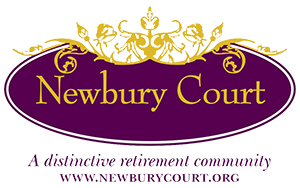Search
Friday, March 9, 2012, First Parish, Wayland
Saturday, March 10, 2012, Old South Church, Boston
These concerts are dedicated to the memory of Harriet Stolmeier Carey,
friend and supporter of Musicians of the Old Post Road
Trio Sonata in G Major, QV 2:Anh.19 ............ Johann Joachim Quantz (1697-1773)
Vivace • Largo • Allegro
Sonata in Eb Major for violin and continuo, Lee III-41 ............ Franz Benda (1709-1786)
Cantabile un poco Andante
Allegro
Presto
Trio Sonata in C Major, GraunWV B:XV:53 ............ Carl Heinrich Graun (1703/4-1759)
Adagio • Allegro
Largo • Allegro
Intermission
Sonata no. 11 in D Minor for traverso and continuo ............ Frederick II, King of Prussia (1712-1786)
[without tempo designation] • Allegro• Presto
Sonata in G Minor for oboe and continuo, H. 549 ............ Carl Philipp Emanuel Bach (1714-1788)
Adagio• Allegro• Vivace
Quartet no. 5 in G Majo ............ Johann Gottlieb Janitsch (1708-c.1763)
Adagio • Allegro moderato• Vivace
Suzanne Stumpf, traverso; Sarah Davol, oboe and oboe d’amore
Sarah Darling, violin; Daniel Ryan, cello; Michael Bahmann, harpsichord
Program Notes
Frederick II, King of Prussia, called “the Great,” is known not only as a German monarch and Prussian military commander but also as a promoter of the arts because of his own ambitious talents as an author, philosopher, flute player and composer. About forty outstanding instrumentalists and eight solo singers were in his personal employ. Among them were Johann Joachim Quantz, the king’s flute teacher and solo flutist; Carl Philipp Emanuel Bach, harpsichordist; Franz Benda, violinist and concertmaster of the court orchestra, the court Kapellmeister Carl Heinrich Graun, and the bass player Johann Gottlieb Janitsch. The legend of the enlightened atmosphere at Frederick’s castle in Potsdam, called Sans Souci, is depicted in the famous painting Das Flötenkonzert by Adolf von Menzel (1852). It shows Frederick playing the flute, accompanied by C. P. E. Bach at the keyboard, Franz Benda among some string players standing alongside the harpsichord, and Quantz on the right, overseeing the performance.
This program offers a sampling of some of the chamber works that may have been performed at the concerts that took place nearly every evening in King Frederick’s rococo concert room. Much of the music captures the rather conservative musical taste of the king, who resisted new musical trends. Throughout his life, he insisted on the affect-oriented Baroque style rather than the new, more personal empfindsamer stil.
For flutists today, Johann Joachim Quantz is one of the most important composers and authors. While in service to the king as composer and teacher, he wrote copious amounts of flute literature, including over 300 concertos, and published a treatise on playing the flute in 1752 that is today considered the most thorough source for 18th-century performance practice.
Quantz’s trio sonatas date from his time in Dresden prior to his appointment to Frederick’s court in 1741. They were written during a period when the transverse flute was a relatively new instrument in Germany. His Trio Sonata in G Major shows sensitivity to the timbres of the flute and oboe d’amore, frequently pairing them in mellifluous thirds and sixths while highlighting the virtuosity of his chosen instrument.
The king wrote 121 sonatas for his instrument, nearly all of which employ the same structure: a slow movement succeeded by two faster ones. Slow movements were most important to the king as they best allowed him to demonstrate his ability for spontaneous musical embellishment. Even Charles Burney, the noted 18th-century chronicler, remarked in his diary on Frederick’s ability to play slow movements with great expression. Frederick’s Sonata in D Minor is unusually colorful in its evocation of vocal forms. Its aria-like opening movement features a restless rhythmic ostinato in the bass over which the flute part provides a soaring, plaintive melody. This movement is bridged to the next with a brief recitative. The work’s fast movements include brilliant passagework and thematic material that is imitated in the bass.
The Bohemian virtuoso violinist Franz Benda was one of four brothers employed at the court. From Charles Burney’s description, Benda and C. P. E. Bach were its most original composers. Benda was famous for his extravagant manner of ornamentation, and his Sonata in E-flat Major amply demonstrates this. To the extent that composers at the time notated ornamentation, they generally confined it to slow movements. In this sonata, Benda notates profuse ornamentation in all of the work’s movements, heightening the expression and brilliance of his highly-sophisticated compositional style.
As the court’s Kapellmeister, Carl Heinrich Graun was chiefly a composer of vocal music and wrote several large-scale operas for Frederick’s newly established opera house and a few sacred works that became very popular. However, he also composed many instrumental works for the court. Although his younger brother Johann Gottlieb (who also worked at Frederick’s court) was the more prolific instrumental composer, Carl Heinrich’s trio sonatas were held in high esteem by his contemporaries for their skillful construction and expressive qualities. The Trio Sonata in C Major offers a fine example of Graun’s expressive thematic material, rich contrapuntal textures, and effective musical pacing.
Carl Philipp Emanuel Bach joined the court around 1740 as its harpsichordist and remained there, not always on the best of terms with the King, until 1768. His highly personal, expressive style was not in keeping with Frederick’s conservative tastes. Bach’s oboe sonata in G Minor is an early work composed before 1735 and later revised. The work shows stylistic features of the late Baroque and Galant while exhibiting the searching espressivity that would later become a hallmark of his style. The third movement of this work is a series of variations over a repeating bass line.
Johann Gottlieb Janitsch began his association with Frederick’s court as a bass player in the court orchestra from 1736 and continued as an instrumentalist and composer until his death around 1763. Janitsch was mentioned by his contemporaries as being an exemplary composer of quartets, and he enjoyed experimenting with unusual combinations of instruments. His Quartet in G Major is a lighthearted work that adroitly takes advantage of the timbres of the three treble instruments through its frequent changes of instrumental pairings in lively figurations.
© Suzanne Stumpf and Daniel Ryan











Daniel Ryan and Suzanne Stumpf, Artistic Directors
349 Boston Post Road, Weston, MA 02493
tel. (781) 466-6694
All content © Musicians of the Old Post Road
Privacy Policy
Terms & Conditions
